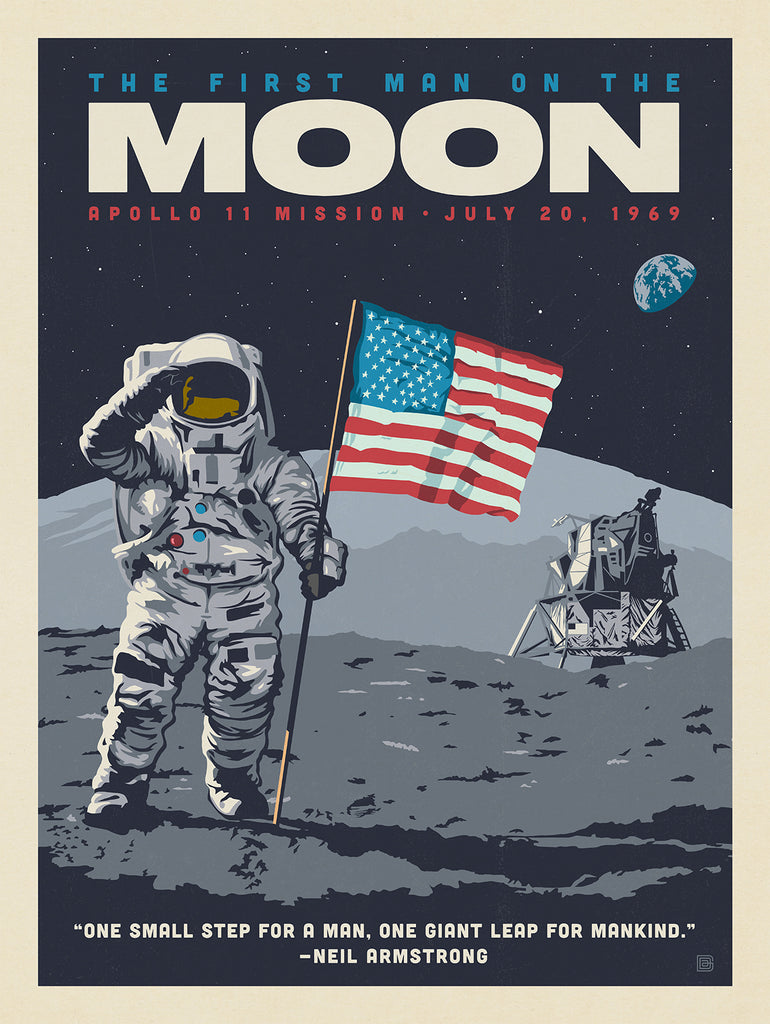
This month marks the 50th anniversary of the Apollo 11 Mission. On July 21, 1969, Neil Armstrong took humanity's first "walk" on a celestial body other than Earth when he stepped onto the Moon's surface. Alongside this monumental achievement, it's also important to remember the work provided on the back-end by the many, many individuals, groups, and machines that helped make this historic landing even possible.
People have desired to walk on the Moon since antiquity, expressing this desire in various art forms for centuries. The physical reality of doing so, however, did not become a possibility until Konstantin Tsiolkovsky's eponymous rocket equation in 1903 and Robert Goddard's first liquid-fueled rocket in 1926.
By 1949, having reaped the rewards of victory after World War II, the United States was in possession of Germany’s top rocket scientists. Stationed in Huntsville, Alabama, these brilliant men were tasked with developing America’s burgeoning missile program. Led by Wernher von Braun, the Huntsville group was eventually incorporated into NASA in 1960 at the Marshall Space Flight Center to drive America's early space program.
The Marshall Center served as the birthplace of the iconic Saturn V rocket that eventually took Apollo 11 to the Moon. It has also supported the U.S. space program well beyond the Apollo era by developing the Space Shuttle's engines and external fuel tank. Huntsville today is known as "The Rocket City" and the early history of the space race can be visited nearby at the U.S. Space & Rocket Center.
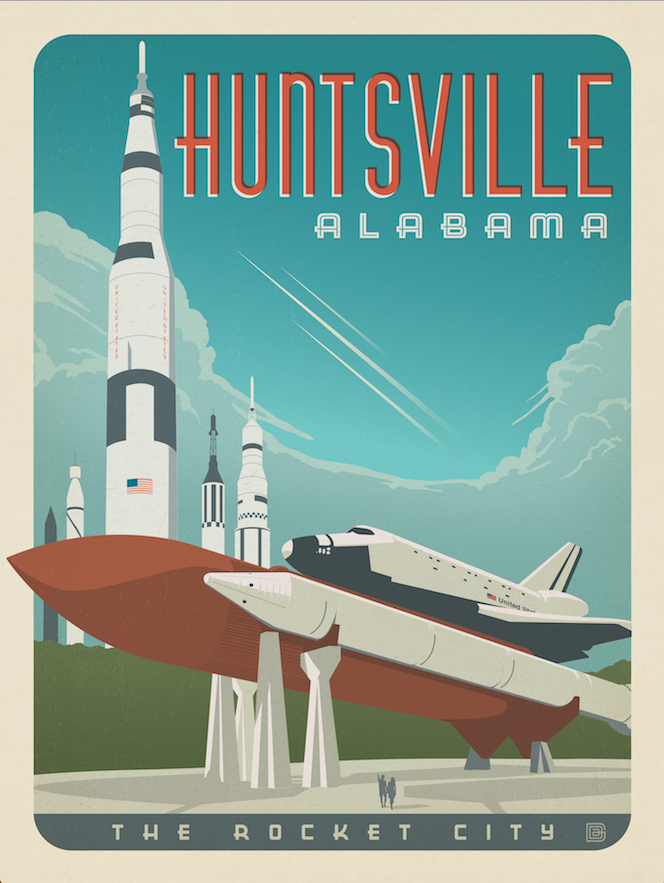
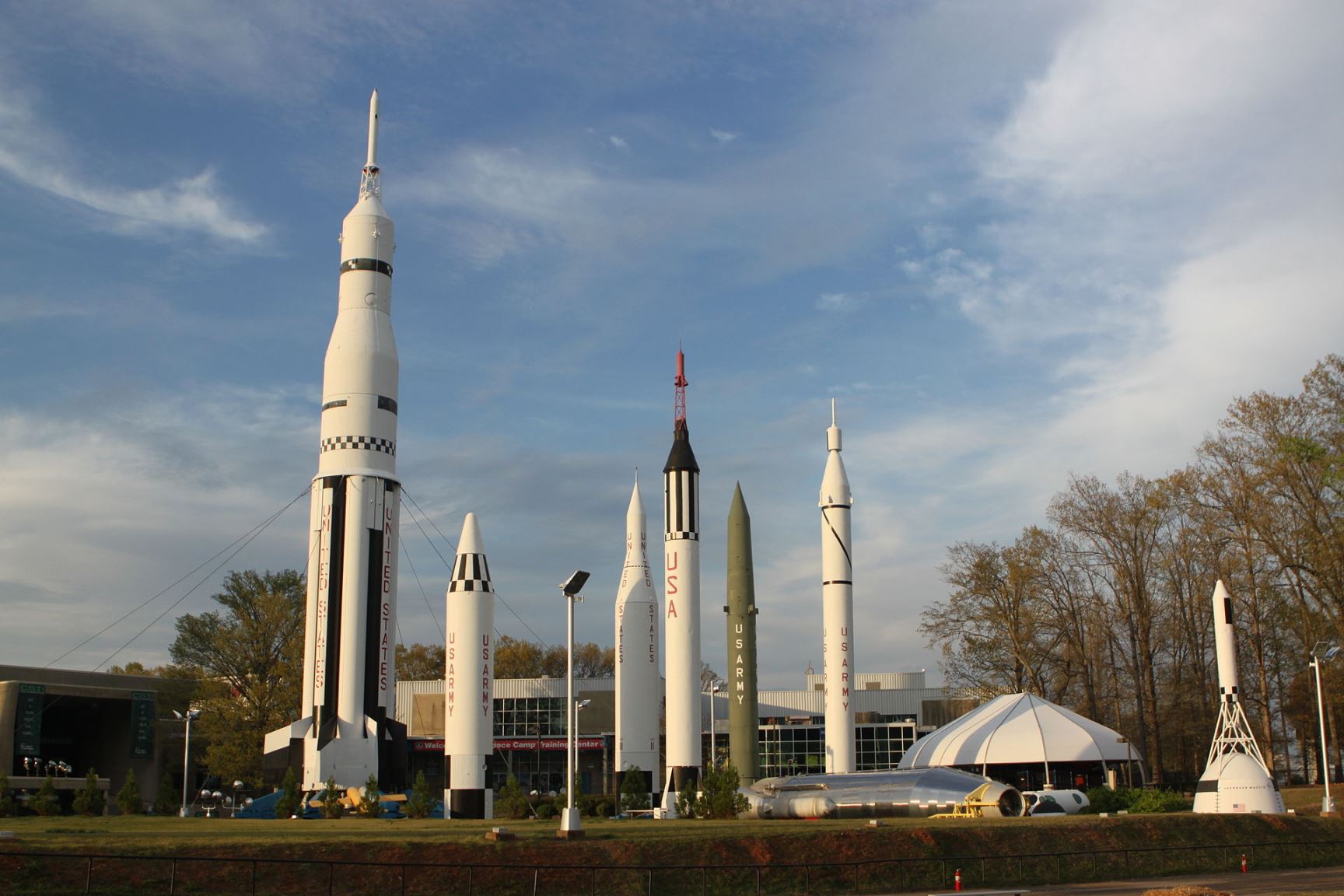
Spread across the country for political expedience, the assembly and testing facilities for the Saturn V each contributed their part to building the three-stage, liquid-fueled rocket that to this day is still the most powerful machine humanity has ever built.
Taller than a football field at 363 feet high, weighing over 6 million pounds, and generating over 7 million pounds of thrust at launch, the rocket first launched as Apollo 4 in November 1967, proving that NASA’s “all-up” testing approach–sending up all three stages of the rocket at the same time versus testing each stage incrementally–would be instrumental in winning the race to the Moon. The Soviet Union wasn’t far behind. The N1 was nearly as massive as the Saturn V, but four launch failures between 1969 and 1972 all but ended any hopes of a manned Soviet lunar mission.
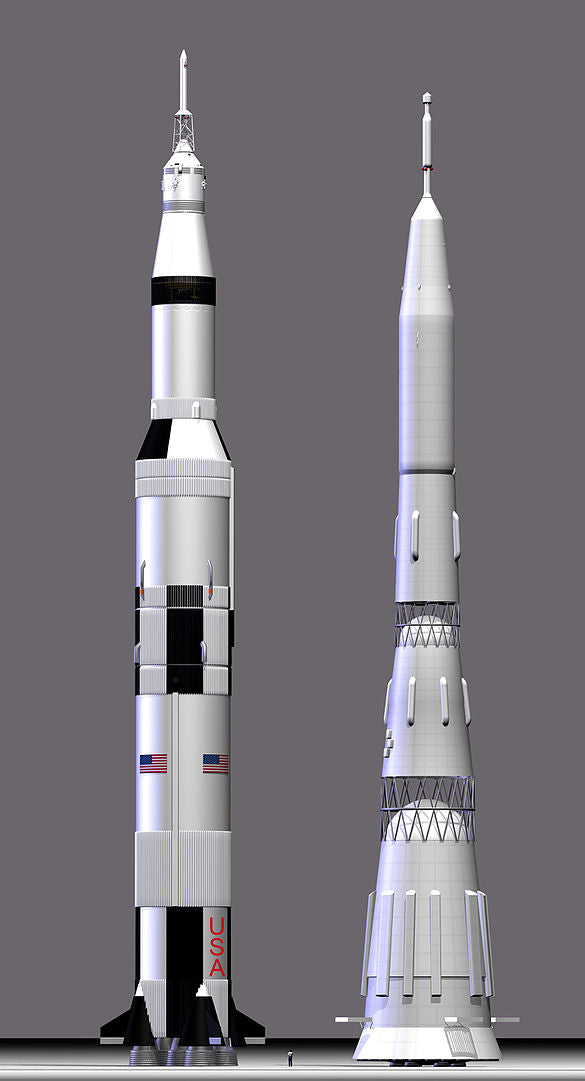
Certainly, the Kennedy Space Center in Florida has garnered most of the attention related to the Apollo program through TV and movies–after all, for most people, watching a Saturn V liftoff was more exciting (and actually accessible) than watching the meticulous building of a Saturn V, but just four seconds after the mighty rocket cleared the launch pad’s tower, control switched from Kennedy Space Center to NASA's Mission Control Center in Houston, TX.
The Lyndon B. Johnson Space Center in Houston has been the home of NASA's manned space flight program since the Apollo era. In addition to providing astronaut training, it also controlled the Space Shuttle program’s missions and serves as one of the control centers for the International
Space Station. Thus Houston has a similar nickname to Huntsville: "Space City". It’s a fitting name, because it was in Mission Operations Control Room number 2 (or “MOCR 2”) of what was then called the Manned Spacecraft Center that Apollo 11’s flight, landing, and return to Earth was managed. The room was added to the National Register of Historic Places in 1985, is now known as “Apollo Mission Control Center”, and is set to reopen for public access in July 2019 after being restored to its original July 1969 condition.
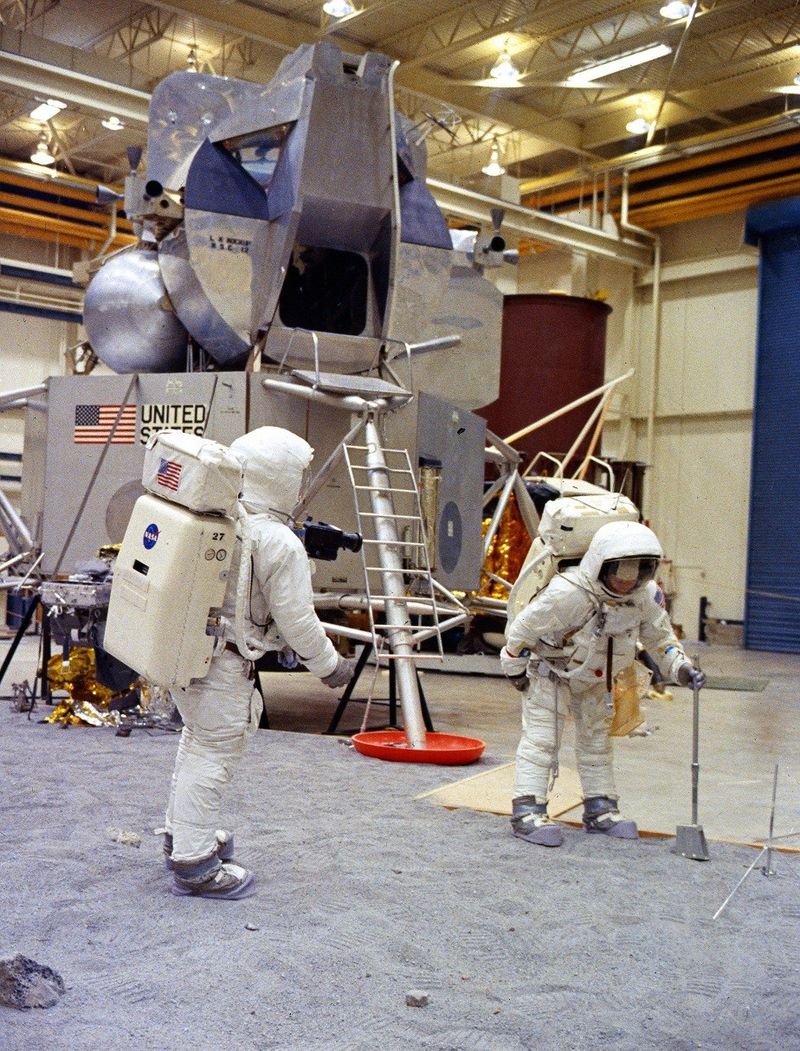

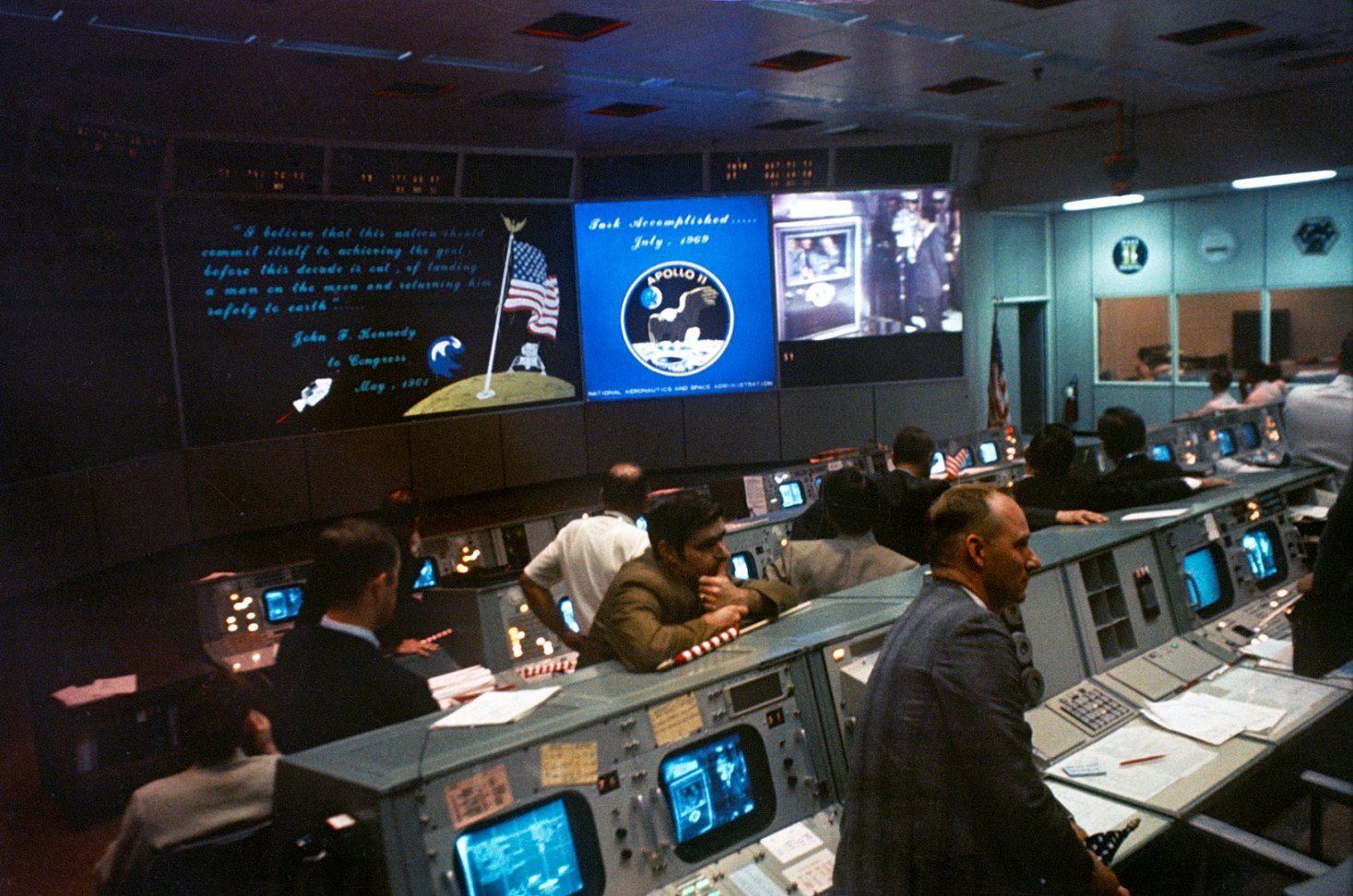

Today, many of the artifacts related to the Apollo program, and Apollo 11 in particular, can be viewed at the National Air and Space Museum in Washington D.C. Columbia, Apollo 11’s Command Module, Neil Armstrong’s Omega Speedmaster chronograph, Michael Collins’ sunglasses, and the Mobile Quarantine Facility, where all three astronauts lived for 88 hours until the danger of infection from “lunar germs” had passed, are all part of an Apollo 11 exhibit.
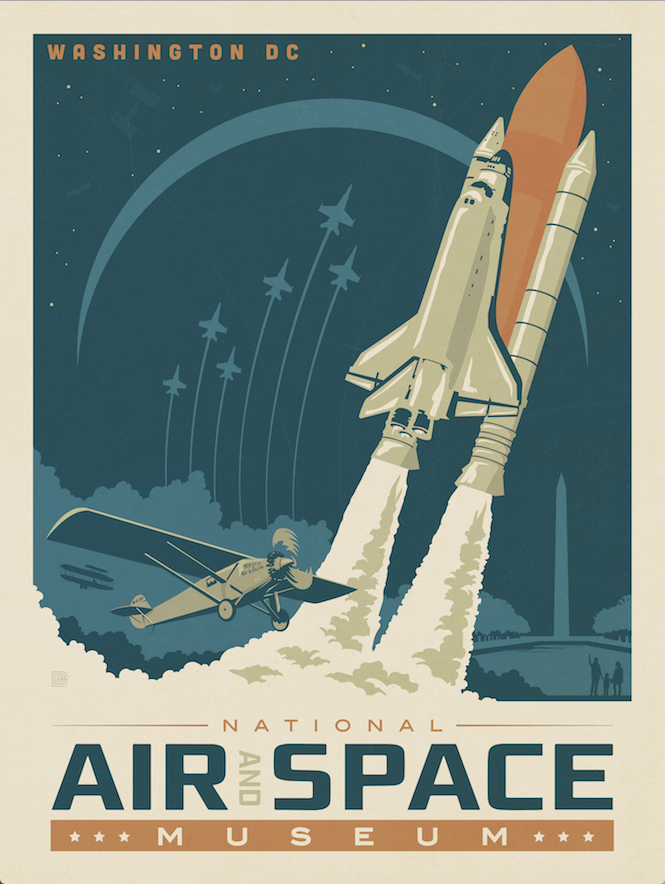
Of course, plenty has been written, filmed, and discussed about the historic landing 50 years ago, but today the question being asked is: When are we going back to the Moon?
We have, in a sense, returned many times, but only through the sensors of the numerous unmanned orbiters, impactors, and probes sent by various nations since 1969. The most notable of these is the landing of China’s Change’e 4 on January 3, 2019, which boasts the distinction of being the first (and to this date, the only) space craft to achieve a soft (unmanned) landing on the far side of the Moon. It’s also worth mentioning that The Soviet Union was the first to impact the lunar surface with Luna 2 in 1959 and the first to successfully land a spacecraft on the (near side) of the Moon with Luna 9 in 1966.

But let’s be honest: returning to Moon for most of us actually means a man or woman either flying by, orbiting, landing, or walking on its surface. So, what are the planned crewed missions and when are they to take place?
Currently, there are four crewed missions—three American and one Russian—with launch dates ranging from 2022 to 2025. NASA’s Artemis 2 will use the Space Launch System – a descendent of the Space Shuttle program—to deliver the first crewed spacecraft beyond Earth’s orbit since 1972 on a free-return trajectory around the Moon while Artemis 3 will send equipment to a proposed space station in lunar orbit in 2024 to support a crewed lunar landing sometime in the same year.
What’s interesting about Artemis 2 is that it simply picks up where Apollo 17 left off, as it will also be the first time in 40 years that humans have flown behind the Moon to its far side. Yet the distinction of being the very first to do so belongs to Apollo 8, which provided one of the most iconic photographs in history as it flew around the Moon: Earthrise.

Meanwhile, SpaceX plans to launch the dear Moon lunar mission—the first crewed lunar fly by of the space tourism industry—using its Big Falcon Rocket in 2023. As of this date, there is only one confirmed passenger, billionaire Yusaku Maezawa, who plans to invite a handful of artists to travel with him.The final player is Russia, which is scheduled to send its Federation spacecraft in a crewed lunar orbit sometime in 2025. Other than that, future missions to the Moon are either robotic, proposed, or without confirmed funding. Each of these missions will fly behind the Moon, giving each crew member the rarest of opportunities, no doubt to be cherished forever.
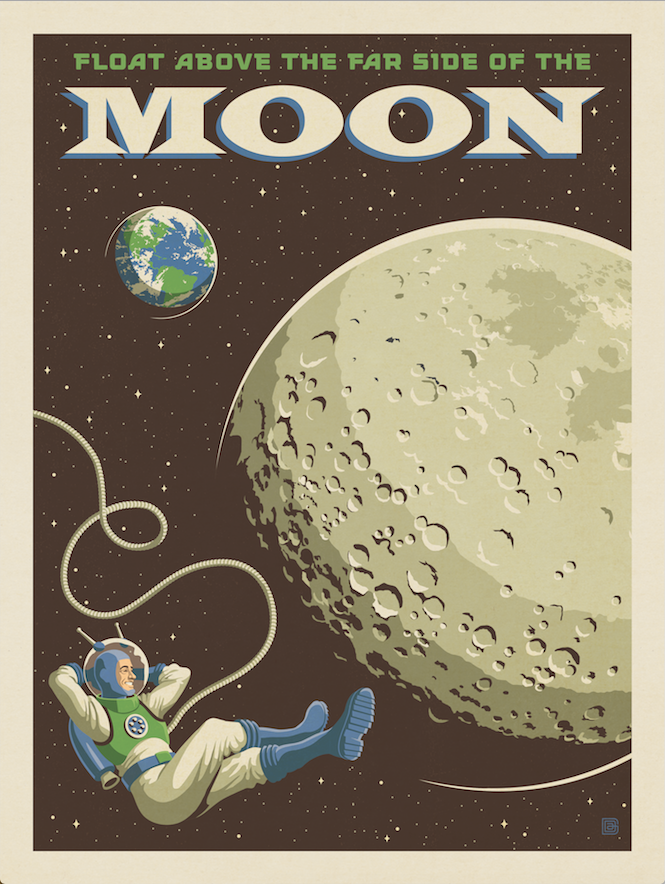
Like what you see? Find all of the Anderson Design Group space travel designs + 1,700 more original vintage travel designs @ adgstore.com. Shop for hand-illustrated travel posters, postcards, notecards, metal signs, coffee table books, and more. All created and printed in the USA.
Third-party photo credits, in order of appearance
- By Ke4roh-Own work, Public Domain,https://commons.wikimedia.org/w/index.php?curid=14869776
- (SATURN By Ebs08-Own work, CC BY-SA3.0,https://commons.wikimedia.org/w/index.php?curid=15519167)
- (TRAINING By NASA-NASA, Public Domain, https://commons.wikimedia.org/w/index.php?curid=14811426)
- (THEN By NASA-http://spaceflight.nasa.gov/gallery/images/apollo/apollo11/html/s69-40301.html(direct link) (JSC reference), PublicDomain,https://commons.wikimedia.org/w/index.php?curid=10956706)
- (NOW By Radio Fan-Own work, CC BY-SA 4.0,https://en.wikipedia.org/w/index.php?curid=51169149)
- (CHANG By CNSA, CC BY4.0,https://commons.wikimedia.org/w/index.php?curid=75750075)
- (EARTHRISE By NASA/Bill Anders-This is a retouched picture, which means that it has been digitally altered from its original version. Modifications: rotation, cropping, level adjustment, dirt removal. Modifications made by Earthsound. The original can be found here., Public Domain, https://commons.wikimedia.org/w/index.php?curid=78273840)












